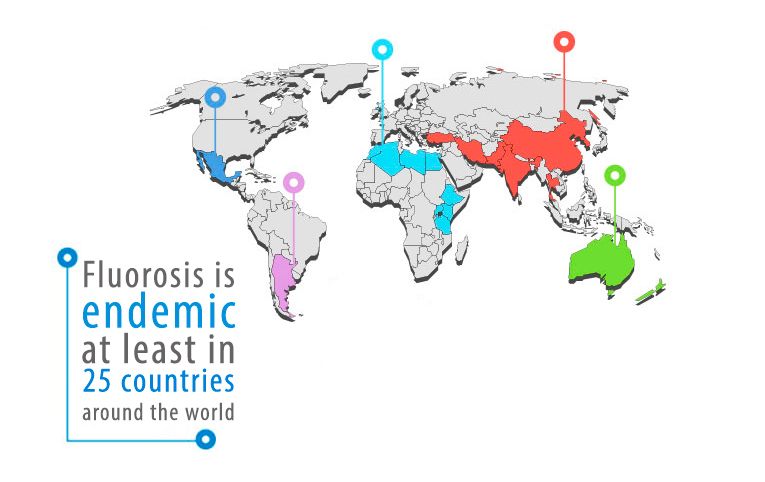WHAT IS FLUOROSIS?
The fluoride ions are attached to the calcium ions, which strengthen the enamel in primary dentition. The ingestion of excessive fluoride leads to the loss of calcium on the tooth´s surface, which presents itself as a type of amelogenesis imperfecta, also known as, dental fluorosis. Fluorosis is the byproduct of the accumulation of severe chronic overexposure to fluoride.
Fluorosis is prevalent in some parts of central and western China. It is not only caused by drinking water but also by the inhalation in an environment saturated by fluoride - the result of the combustion of mineral carbon contaminated by fluoride. For this reason, there exists an increase of fluorosis cases.

An endemic pathological effect due to the excessive intake of the fluoride ion
The ingestion of excessive fluoride causes irreversible damage to the tooth enamel because it occurs at the time of amelogenesis where the excess fluoride affects the mineralization and maturation process of the ameloblasts. This process manifests itself as a malformation and hypocalcification of the enamel in varying levels. The level of fluorosis is dose threshold specific and also depends on the total fluoride ingestion from all sources, as well as the age of the individual at the time of ingestion and the duration of exposure to said element.
Groundwater reservoirs are a large source of fluoride, amongst natural geographic areas. In 1984 the OMS suggested that in hot climate areas, the recommended concentration of fluoride in water for consumption should remain below 1 mg/liter (1 part per million), while in cooler climate areas it may go above 1.2 mg/liter.


 Are an international certificated company: ISO 13485:2013 e IS0 9001:2008
Are an international certificated company: ISO 13485:2013 e IS0 9001:2008